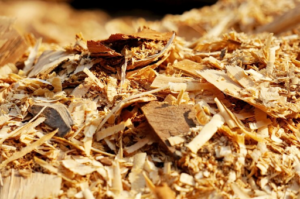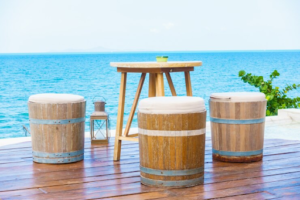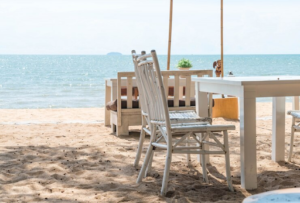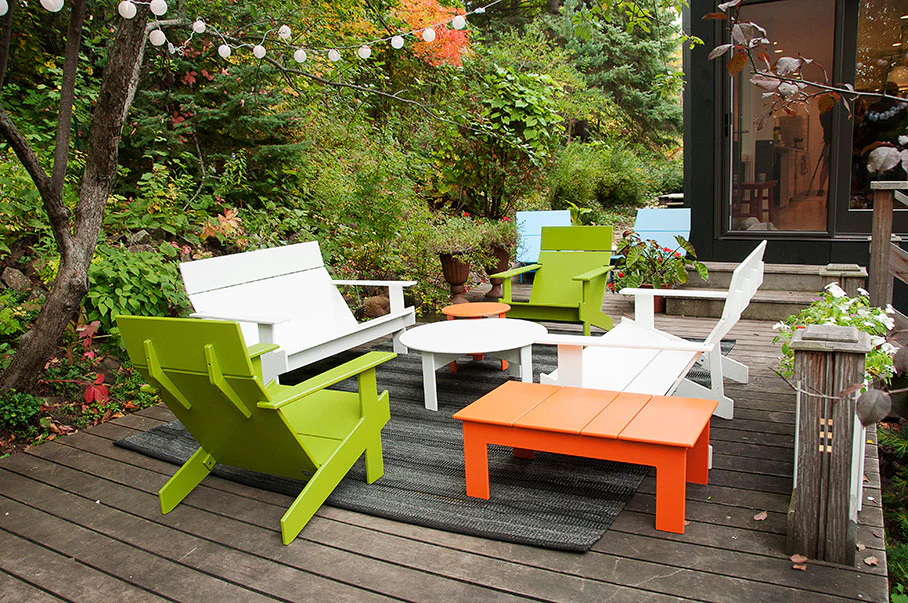In an age where sustainability and environmental consciousness are becoming increasingly important, the demand for eco-friendly products, including outdoor furniture, is on the rise. Consumers are looking for ways to reduce their environmental footprint without compromising on quality or aesthetics.

Crafting sustainable wood furniture has taken a new turn with the use of upcycled materials such as rice hulls. This article traces the journey of rice hulls from farm fields to your outdoor space, highlighting the benefits and challenges of this unique material.
Modern mills provide durable sustainable wood furniture made to last from safe, upcycled, recycled and regenerative sourced materials, that can circulate multiple times. These easily repairable and recyclable materials are transformed into stylish and eco-friendly products.
What are Rice Hulls?
Rice hulls, commonly referred to as rice husks, serve as the natural protective covering for rice grains during their growth. These husks possess remarkable characteristics that make them a standout material for upcycling initiatives.
Notably lightweight yet exceptionally durable, rice hulls offer a unique blend of strength and versatility. Their abundance further amplifies their appeal as an eco-friendly resource. Instead of being discarded as agricultural waste post-harvest, these husks can be transformed into an array of sustainable products.
From insulation materials to animal bedding and, notably, outdoor furniture, rice hulls showcase the potential of repurposing natural resources in innovative and environmentally conscious ways.
Why are Rice Hulls Considered Waste?
After rice is harvested, the hulls are often considered waste and discarded. This results in a significant amount of agricultural waste that can pose environmental challenges if not properly managed.
Upcycling rice hulls into useful products like outdoor furniture not only reduces waste but also adds value to a material that would otherwise be underutilized.

The Upcycling Process
The upcycling process for rice hulls involves several key stages to transform this agricultural byproduct into valuable materials. Initially, the rice hulls are meticulously cleaned to remove impurities and moisture.
Subsequently, they are combined with eco-friendly binding agents. Through specialized molding and shaping techniques, the mixture is then fashioned into durable and stylish products, such as outdoor furniture, showcasing the ingenuity of sustainable manufacturing practices.
Collection and Preparation of Rice Hulls
The first step in the upcycling process involves collecting and preparing the rice hulls for use. After rice is harvested, the hulls are separated from the grains and collected from rice mills or farms.
They are then cleaned and processed to remove any impurities and moisture, making them suitable for manufacturing.
Manufacturing Eco-Friendly Outdoor Furniture
Once the rice hulls are cleaned and prepared, they can be combined with other eco-friendly materials, such as recycled wood or plastic, to create durable and stylish outdoor furniture.
The manufacturing process typically involves mixing the rice hulls with a binding agent and molding the mixture into various furniture designs, including chairs, tables, and benches.
Benefits of Using Upcycled Rice Hulls in Outdoor Furniture
Utilizing upcycled rice hulls in outdoor furniture presents a plethora of advantages. Firstly, it significantly reduces agricultural waste, promoting eco-friendly practices.

Secondly, rice hulls contribute to a lower carbon footprint as they require less energy for processing compared to virgin materials. Their inherent durability ensures longevity and resistance to rot, mold, and pests, enhancing the lifespan of the furniture.
Additionally, their versatility in design offers aesthetic appeal, allowing for a wide range of stylish and sustainable outdoor furniture options.
Environmental Benefits
- Reduced Waste: By upcycling rice hulls, we can significantly reduce agricultural waste and minimize the environmental impact associated with traditional disposal methods.
- Carbon Footprint Reduction: Upcycled rice hulls require less energy to process compared to virgin materials, resulting in lower carbon emissions and a smaller overall environmental footprint.
Durability and Longevity
Despite being lightweight, rice hulls are incredibly durable and resistant to rot, mold, and pests. This makes them an excellent choice for outdoor furniture that is built to last, even in harsh weather conditions.
Aesthetic Appeal and Versatility
Upcycled rice hulls can be molded into a variety of shapes and styles, offering endless design possibilities for eco-conscious consumers. Whether you prefer a modern minimalist look or a rustic charm, there is an upcycled rice hull furniture piece to suit every taste and outdoor space.
Challenges and Considerations
Cost of Production
While upcycling rice hulls offers numerous benefits, it is not without challenges. The cost of collecting, cleaning, and processing rice hulls can be higher than using conventional materials, which may result in higher retail prices for eco-friendly furniture made from upcycled rice hulls.
Availability and Supply Chain Logistics
The availability of rice hulls can vary depending on the region and harvesting season. Establishing a reliable supply chain for consistent and high-quality rice hulls can be challenging, especially for manufacturers operating on a larger scale.

Material Limitations
While rice hulls are durable and versatile, they do have some limitations. They may not be suitable for all types of outdoor furniture designs or applications, and their lightweight nature may require additional reinforcement or support in certain cases.
Conclusion
The journey of rice hulls from the fields to your patio represents a compelling example of how innovative thinking and eco-friendly practices can transform waste into valuable and sustainable products.
While there are challenges to overcome, the environmental benefits, durability, and aesthetic appeal of upcycled rice hull furniture make it an attractive choice for eco-conscious consumers looking to enhance their outdoor living spaces.
By choosing to invest in outdoor furniture made from upcycled rice hulls, you are not only making a stylish and durable choice for your patio but also contributing to a more sustainable and environmentally friendly future.
So, the next time you relax in your outdoor space, take a moment to appreciate the journey of your furniture and the positive impact it has on our planet.




